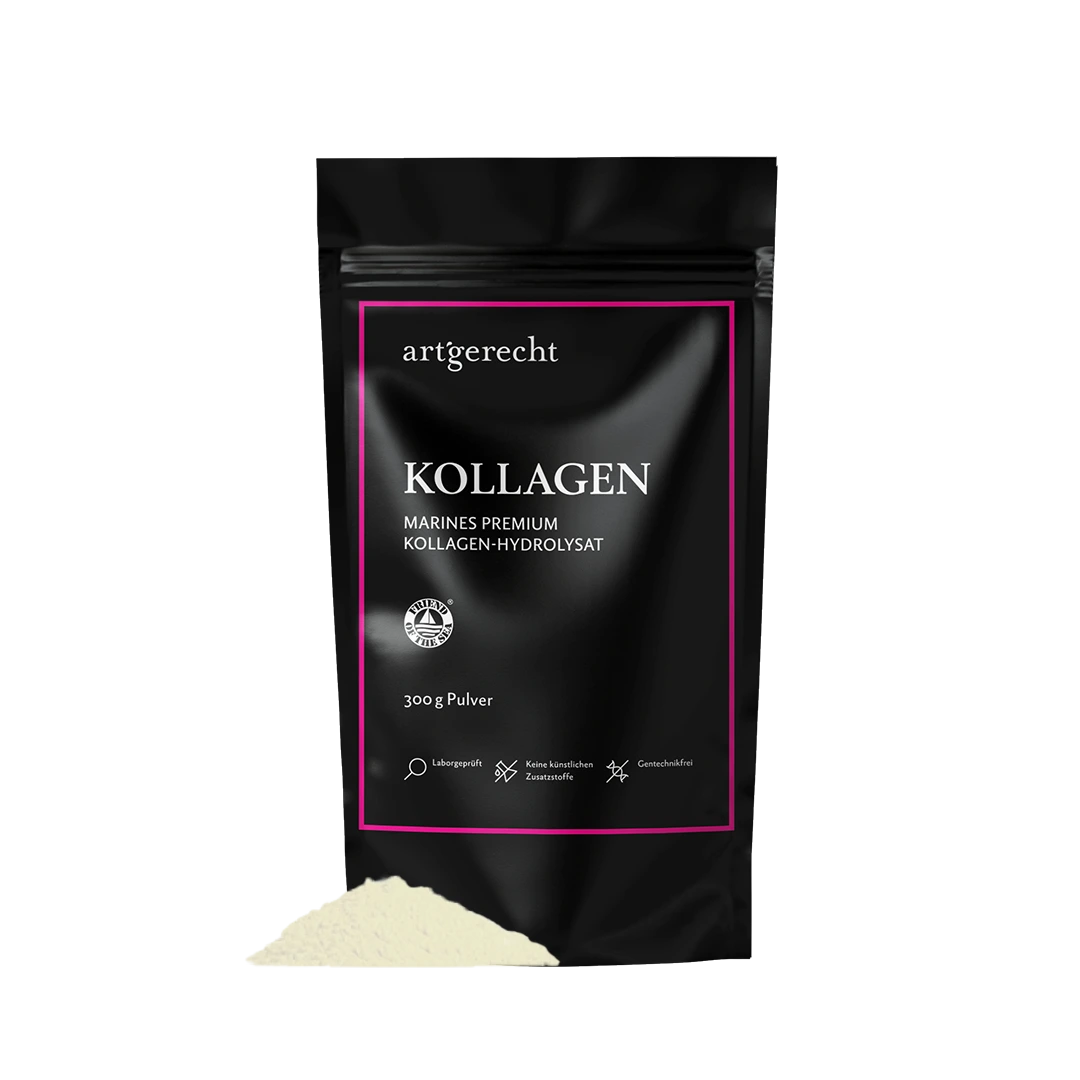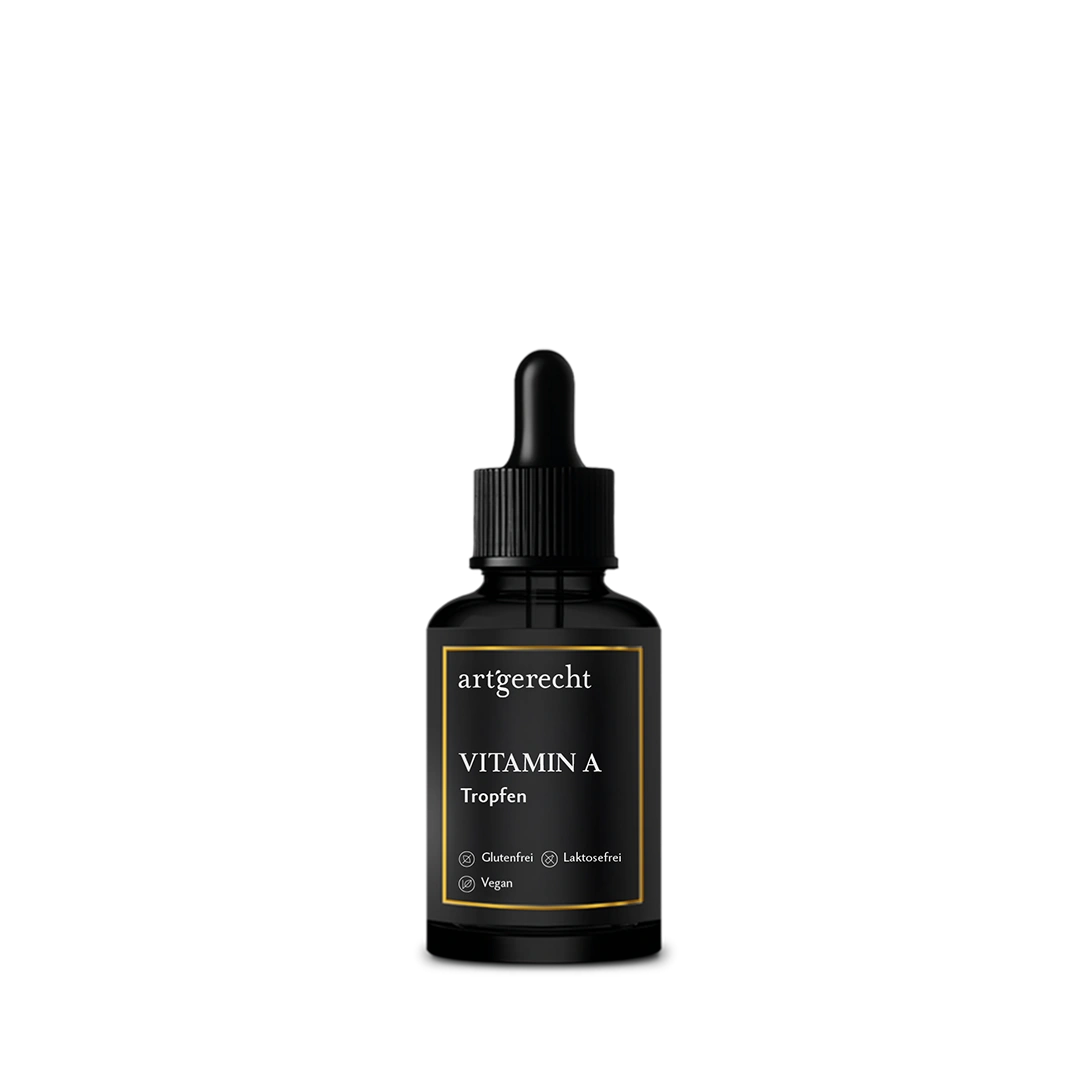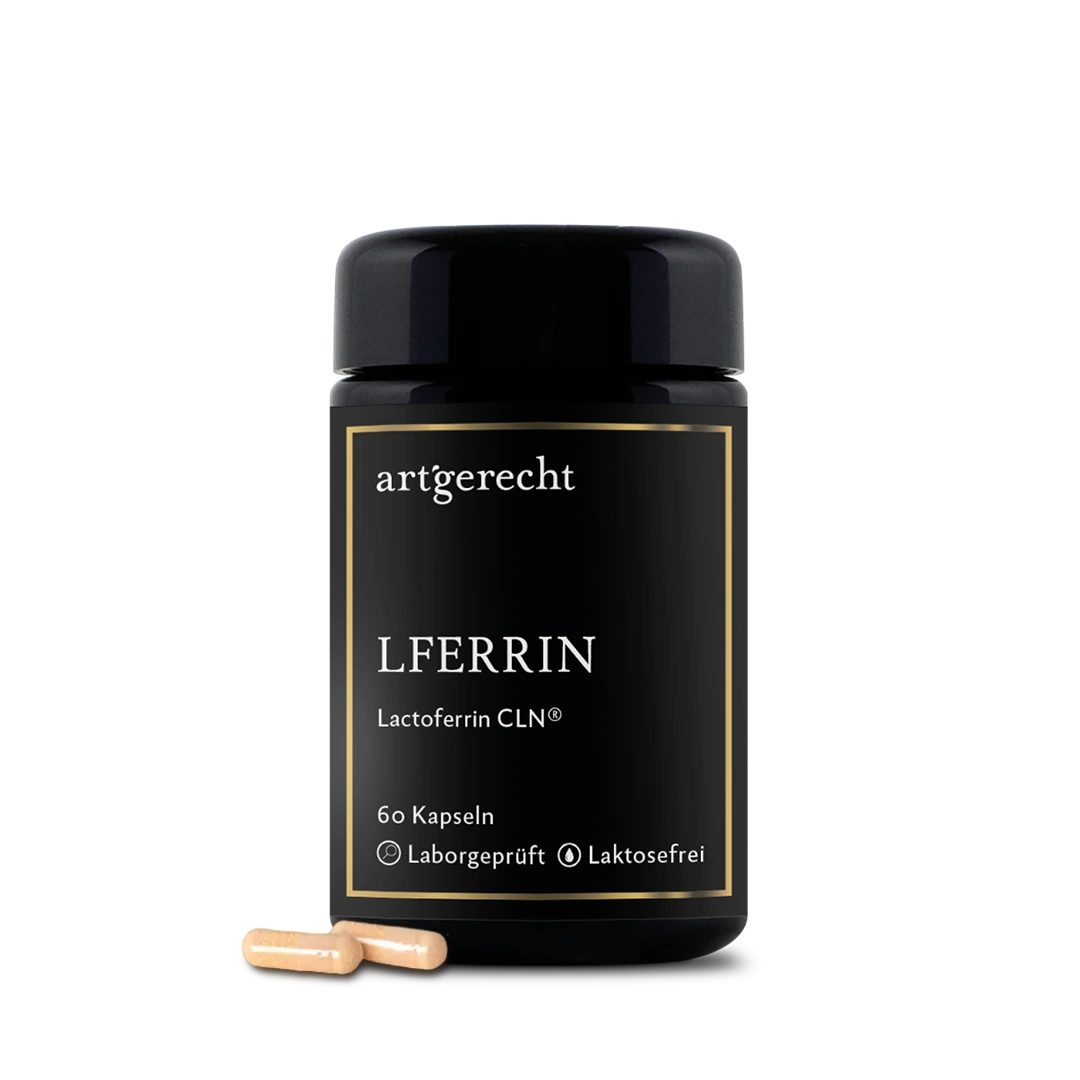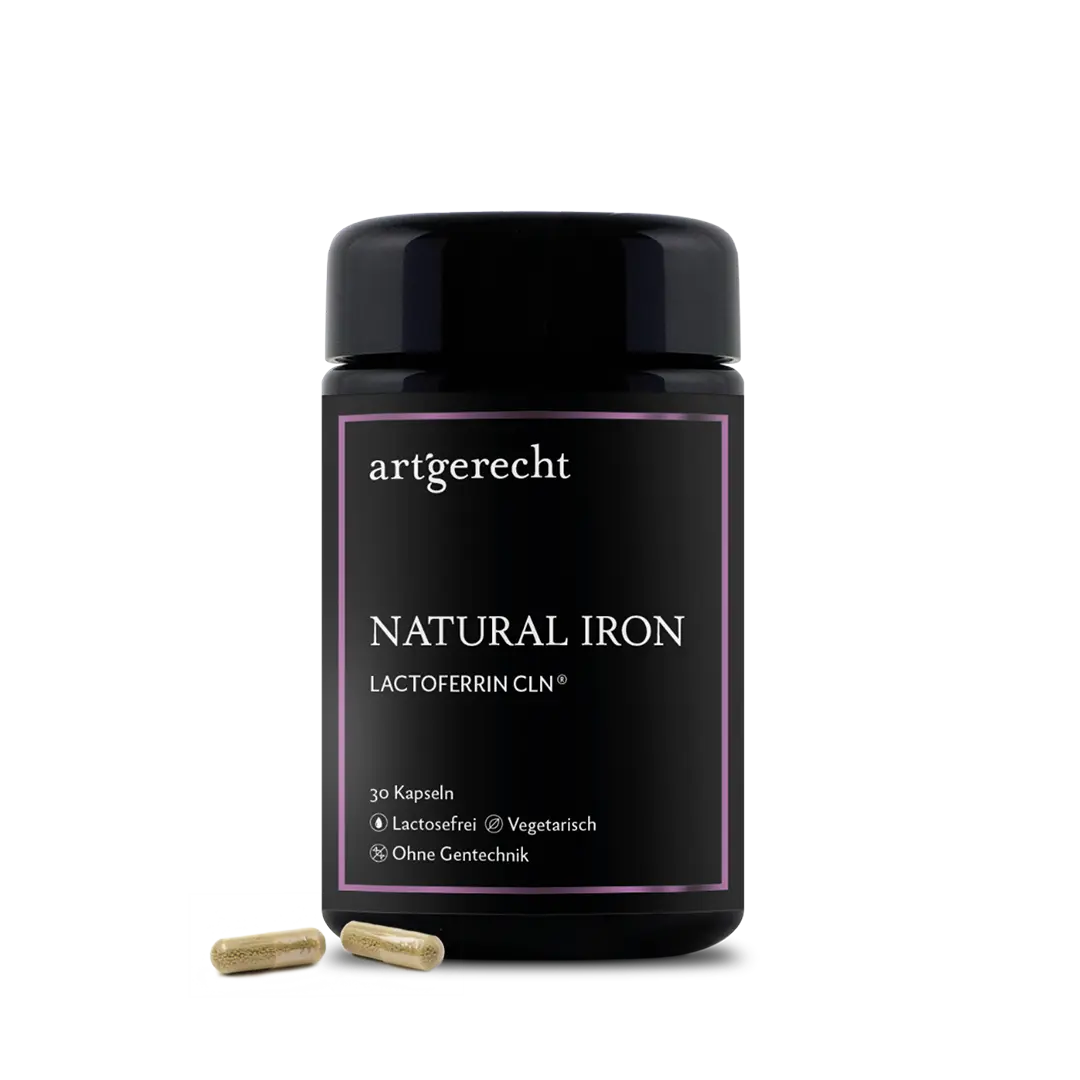- What are probiotics?
- You are not alone…
- Bacteria, viruses, fungi – the diversity makes it
- Our „gut-brain“
- When the intestinal flora gets out of balance
- Typical complaints with an imbalance of intestinal flora
- How do probiotics strengthen the immune system?
- Which are the best probiotics?
- Which probiotics are suitable for intestinal cleansing?
- Analyses for a healthy gut
- These probiotic foods make gut bacteria happy
- Probiotic or präbiotic?
-
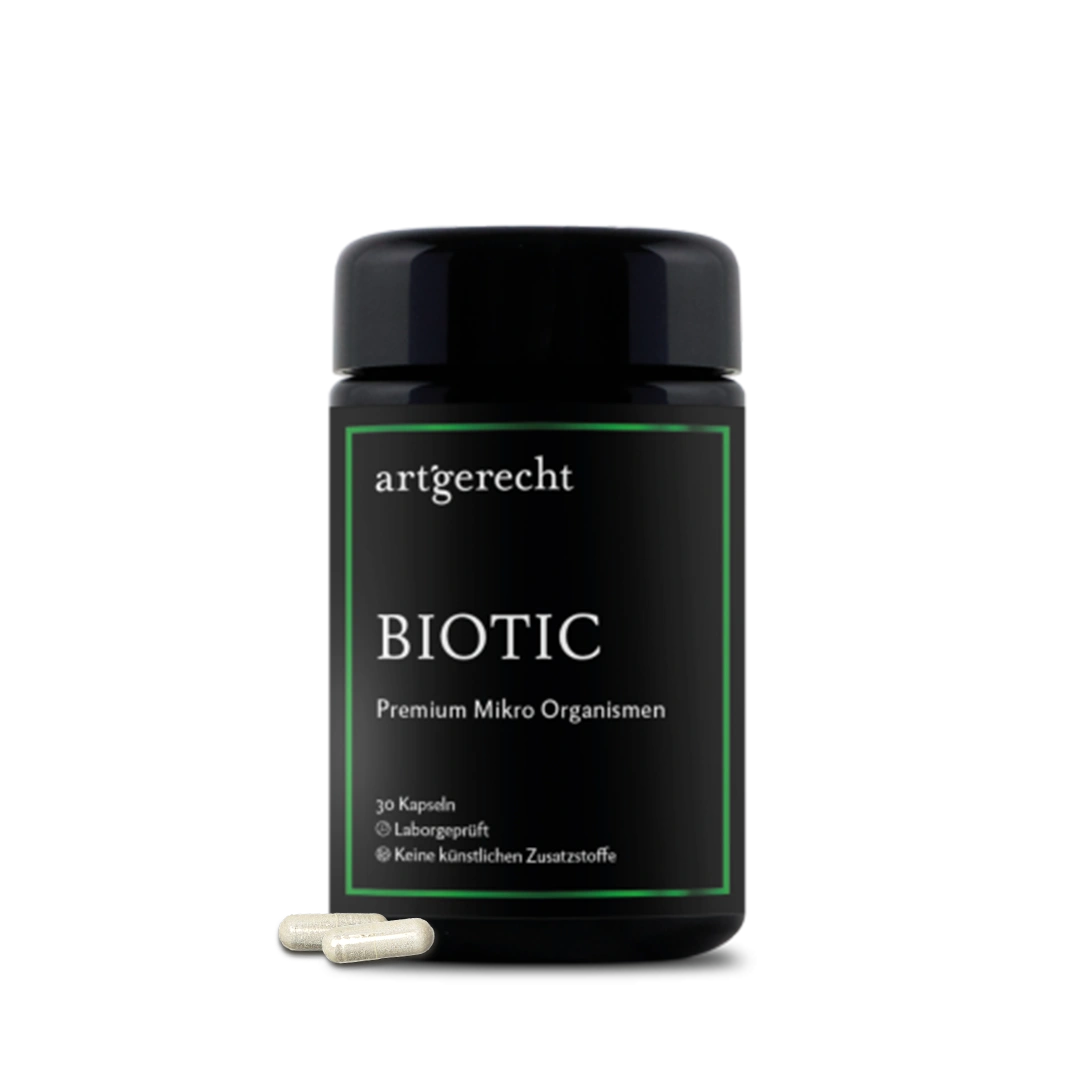 €35.90
€35.90
Our intestinal flora is a complex ecosystem of different bacteria, viruses and fungi that live in constant coexistence and support our organism. Probiotics can help to maintain a healthy balance in the gut or restore it after illness.
What are probiotics?
Probiotic stands for: pro = food and biotic = life. Probiotics are therefore living microorganisms, such as bacterial strains and sometimes also fungal strains, which are absorbed through the mouth. They reach their destination in our gut and can have a positive effect on our health[16].
.Probiotics can be used not only in the gut, but also for other areas of the body. It is important to note that each part of the microbiome is home to different microorganisms – the intestinal flora is not like the oral flora.
The use of probiotic microorganisms can be preventative (preventative, e.g. during and after taking an antibiotic) and as part of medical treatments[17] (e.g. by ). e.g. diarrhea) and serves to improve the interaction between bacteria, viruses, fungi, our intestines and consequently the entire organism [18].
To be precise, a human being is a collection of an incredible 100 trillion cells that communicate with each other in a sophisticated system. However, we are not only made up of countless cells, but are also hosts to various microorganisms that make us a true „superorganism“ [1]. This means that we actually only become human by living together (symbiosis) with other, non-human cells. Even if that may sound a little crazy. The so-called „biome“ is the total number of all cells, bacteria, viruses and fungi[2]. This close connection to our „fellow inhabitants“ has developed together as a kind of co-evolution and is directly related to individual health [3].
Bacteria, viruses, fungi – the diversity makes it
As just described, the „biome“ makes up the total number of all our cells. When we talk about the microbiome, we are referring to the many microorganisms that live in, on and with us. In other words, all the bacteria, viruses, fungi etc. on all our body surfaces. The part of the microbiome in the gut is known as the gut flora. This may be hard to imagine for many people, but more than 100 trillion microbes[4] live there alone, which is exactly as many as we have body cells. It's difficult to imagine such a large number, so here's a little analogy: if you were to line up all the microbes and needed one second for each one, you would need over three million years.
However, it is not only the number of bacteria, viruses and fungi that is decisive, but also their relationship to each other and their respective functions for our organism. The symbiosis consists of give and take. The metabolism of microorganisms serves the digestion of ingested food, especially fats, carbohydrates and proteins. At the same time, they are also involved in the formation (synthesis) of vitamins, such as the B vitamins and vitamin K [5],[6].
The intestinal flora also produces various messenger substances that serve as neurotransmitters for the brain and are in turn linked to various functions (Fig. 1). The intestinal flora therefore also has a direct influence on our behavior [7].
| Bacterial strain | Production of | Task in the brain (simplified) | |
| Lactobacillus (lactic acid bacteria) and Bifidobacterium species | Gamma-Amino-Buttersäure (GABA) | Induction and maintenance of sleep | |
| Escherichia, Bacillus and Saccharomyces spp | Norepinephrine | Energy, concentration, motivation | |
| Candida, Streptococcus, Escherichia and Enterococcus spp. produce | 5HT (serotonin) | feeling of happiness, well-being, satisfaction | |
| Bacillus | Dopamine | Joy of life, inner peace, pleasure | ;hl, motivation |
| Lactobacillus (lactic acid bacteria) | Acetylcholine | Attention, waking, learning, memory formation |
Our „gut-brain“
The intestinal ecosystem with its 100 trillion microorganisms weighs around one kilogram in an adult. Our brain weighs about the same [8]. The sophisticated communication system between microbes, gut and brain is known as the microbiome-gut-brain axis, or colloquially as gut-brain. Communication takes place in both directions [9] via our nerves (neuronal signals), hormones and messenger substances of the immune system. In other words, from the brain to the gut and vice versa. A species-appropriate and healthy diet can have a significant positive influence on the function of this axis [10].
When the intestinal flora gets out of balance
If our intestinal flora is out of balance, this is also referred to as dysbiosis. This happens when [11]:
- good bacteria (symbionts) are lost
- negative bacteria (pathobionts) spread
- the diversity of different microorganisms is reduced
There are various reasons for the development of such an imbalance. In addition to the fact that the stability and diversity of the intestinal flora decreases with increasing age, behavioral causes are a major component. These include:
Nutrition
- Inadequate and malnutrition
- Low-fiber diet
- Too much sugar
- Too few micronutrients (e.g. vitamins and minerals)
- Too little sugar
- To little micronutrients (e.g. vitamins and minerals)
- Luxuries such as alcohol, coffee and tobacco [12]
Stress
- In particular chronic and psychosocial [13]
Diseases
- Diseases and infectious diseases caused by fungal infestation, parasites etc.
- Depression
- Chronic pancreatic hypofunction
- Allergies
- Diseases of the liver
Medications
More than 1,000 active ingredients are now associated with effects on the intestinal flora[14]. The best-known groups of active ingredients are [15][25]
- Antibiotics
- Antidepressants
- Antihistamines
- Corticoids
- Proton pump inhibitors
- Statins
- Cytostatics
Typical complaints with an imbalance of intestinal flora
The following symptoms may indicate an imbalance in the intestinal flora:
- Itching at the mouth and/or nose openings
- Constipation or diarrhoea, also alternating
- Flushing
- Intermittent memory loss
- /li>
- Itching of the anus
- Infections of the mucous membranes of the nose and/or mouth
- Skin irritations
- Coated tongue
- Allergic reactions
- Intolerance to certain medicines
- intolerance to certain chemicals such as detergents or tobacco smoke
- frequent and/or chronic fatigue
- Difficulty falling asleep, depression or depressive moods
- Recurrent muscle weakness or injury
- Headaches, migraines
- Nervousness
How do probiotics strengthen the immune system?
The immune system is in close and inseparable communication with our microbiome [20]. If an imbalance arises there, probiotics can help to normalize the condition again [21]. Probiotic bacteria regulate our immune system and are a key element for optimal interaction between the innate and acquired immune system [22]. As the immune system also serves as a defense against harmful invaders, it is important to find a balance between activity and regulation. This is where the use of probiotic cultures can be helpful in order to avoid a lack of response or a poor response. [23]
Which are the best probiotics?
Probiotics are initially just a collective term for all microbial strains. The classification into good and bad depends on the respective indication: a probiotic on the market should contain various strains that have shown a positive benefit in studies in order to be considered good from a scientific point of view. In addition, quality standards of the products must be taken into account [24]. Particularly with probiotic products purchased online, attention should be paid to a detailed list of ingredients, dosage recommendations and health-related information. [24]
Established manufacturers use strains of lactic acid bacteria (Lactobacillus), Bifidobacterium and Saccharomyces, for example. These probiotic strains have been scientifically studied over many years and can be used safely and effectively. The strains Roseburia spp., Akkermansia spp., Propionibacterium spp. and Faecalibacterium spp. are more forward-looking. [26]
Which probiotics are suitable for intestinal cleansing?
Intestinal cleansing is used to regenerate and rebalance the intestinal mucosa and intestinal flora, e.g. after taking an antibiotic. For successful intestinal cleansing, bacterial strains of Lactobacillus (lactic acid bacteria), Bifidobacterium and Saccharomyces should be used in a broad spectrum [27].
Analyses for a healthy gut
In the case of pre-existing medical conditions such as chronic inflammatory bowel disease (ulcerative colitis, Crohn's disease), analyzing a stool sample can also help as part of bowel cleansing and therapy. This can determine exactly which intestinal bacteria are present in insufficient quantities and should be added via a selection of probiotic bacterial strains. Here the precautionary use of probiotics differs from medical applications and specific diseases [24]. If the intake takes place as part of the treatment of a disease, it is advisable to consult the attending physician about the possible use of a special probiotic drug.
These probiotic foods make gut bacteria happy
Probiotic foods are good for our health. They support the immune system as a whole and promote a healthy balance of our intestinal bacteria. Particularly noteworthy here are fermented foods. Fermentation is a fermentation process with the help of bacterial strains (lactic acid bacteria). This includes, for example:
- Sauerkraut
- Sour cucumbers
- Kombucha (fermented tea)
- Kimchi (fermented Chinese cabbage)
- Kefir
Probiotic or präbiotic?
In order for the probiotic lactic bacteria to feel good in our body, they need so-called biotics. Prebiotics are soluble fiber and serve as food for our good intestinal bacteria. They are found in chicory, garlic and onions, for example. It therefore makes sense to integrate a good mix of probiotic foods and biotics into your diet. If we cannot manage this, probiotic food supplements can also provide support.
Passende Produkte
-
 €35.90
€35.90
Kürzlich hinzugefügte Beiträge
-
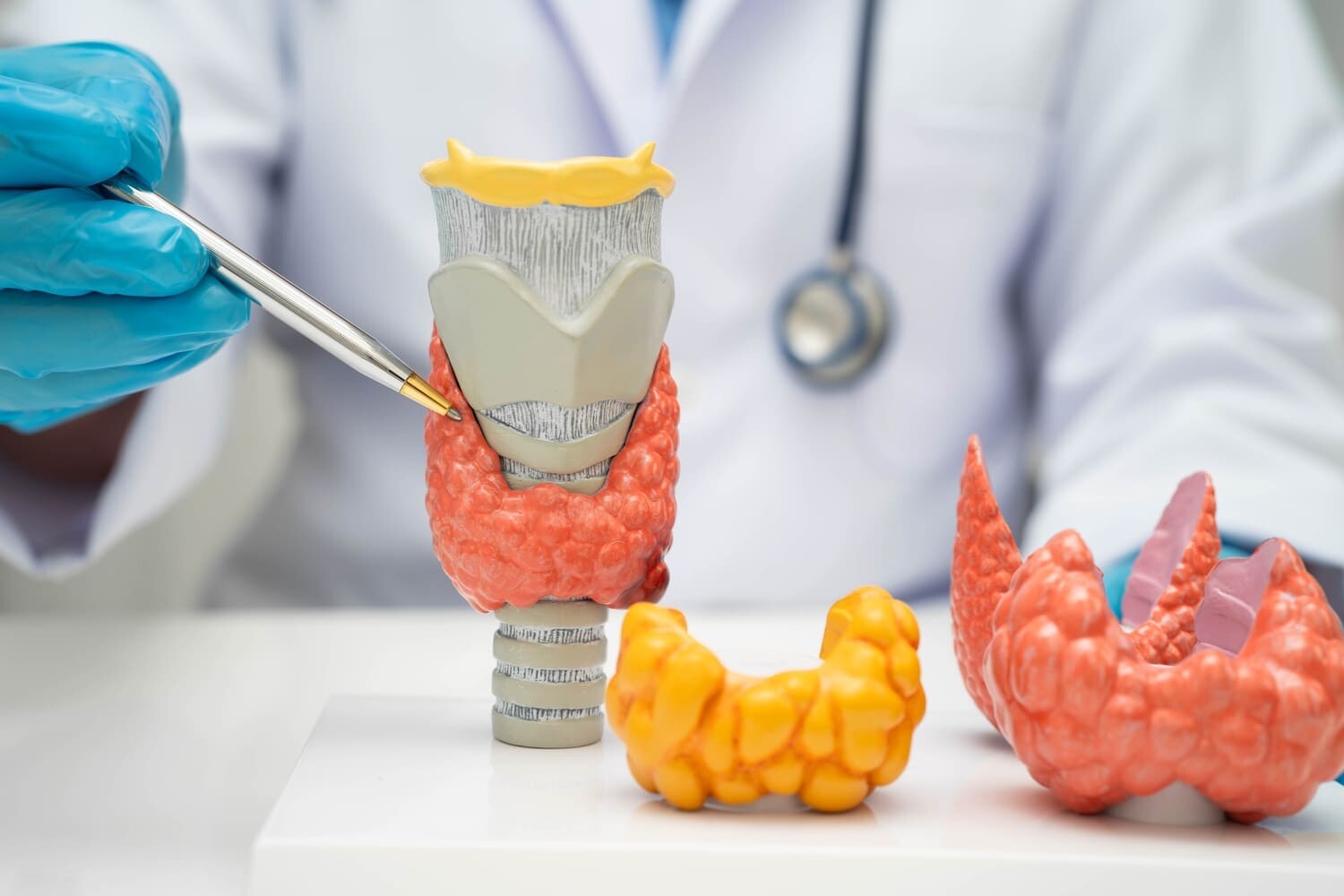 Hypothyreose und Übergewicht – Aktuelle Erkenntnisse und DatenSchilddrüsenunterfunktion verlangsamt den Stoffwechsel und begünstigt Gewichtszunahme. Erfahre Symptome und Tipps zur Unterstützung Deines Körpers.
Hypothyreose und Übergewicht – Aktuelle Erkenntnisse und DatenSchilddrüsenunterfunktion verlangsamt den Stoffwechsel und begünstigt Gewichtszunahme. Erfahre Symptome und Tipps zur Unterstützung Deines Körpers. -
 Elektrolyte – Die unsichtbaren Regisseure unseres KörpersElektrolyte steuern lebenswichtige Prozesse wie Muskelarbeit, Nervenfunktion und Flüssigkeitshaushalt. Erfahre, warum sie für Gesundheit und Leistung so entscheidend sind.
Elektrolyte – Die unsichtbaren Regisseure unseres KörpersElektrolyte steuern lebenswichtige Prozesse wie Muskelarbeit, Nervenfunktion und Flüssigkeitshaushalt. Erfahre, warum sie für Gesundheit und Leistung so entscheidend sind. -
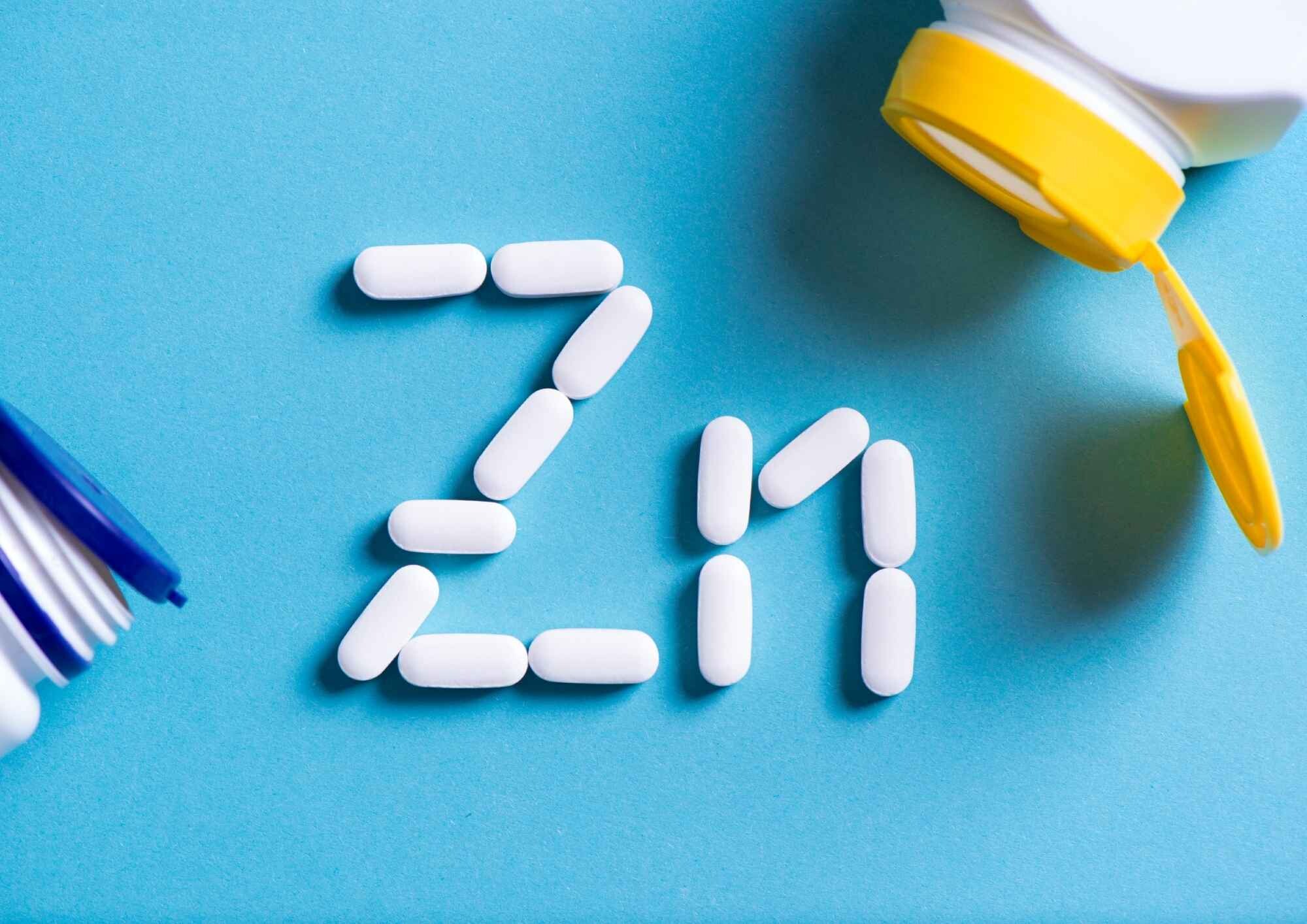 Zink reduziert nachweislich die Krankheitsdauer – Was sagt die Wissenschaft?Zink kann mehr als nur das Immunsystem stärken. Studien zeigen, dass es die Dauer von Erkältungen spürbar verkürzen kann.
Zink reduziert nachweislich die Krankheitsdauer – Was sagt die Wissenschaft?Zink kann mehr als nur das Immunsystem stärken. Studien zeigen, dass es die Dauer von Erkältungen spürbar verkürzen kann. -
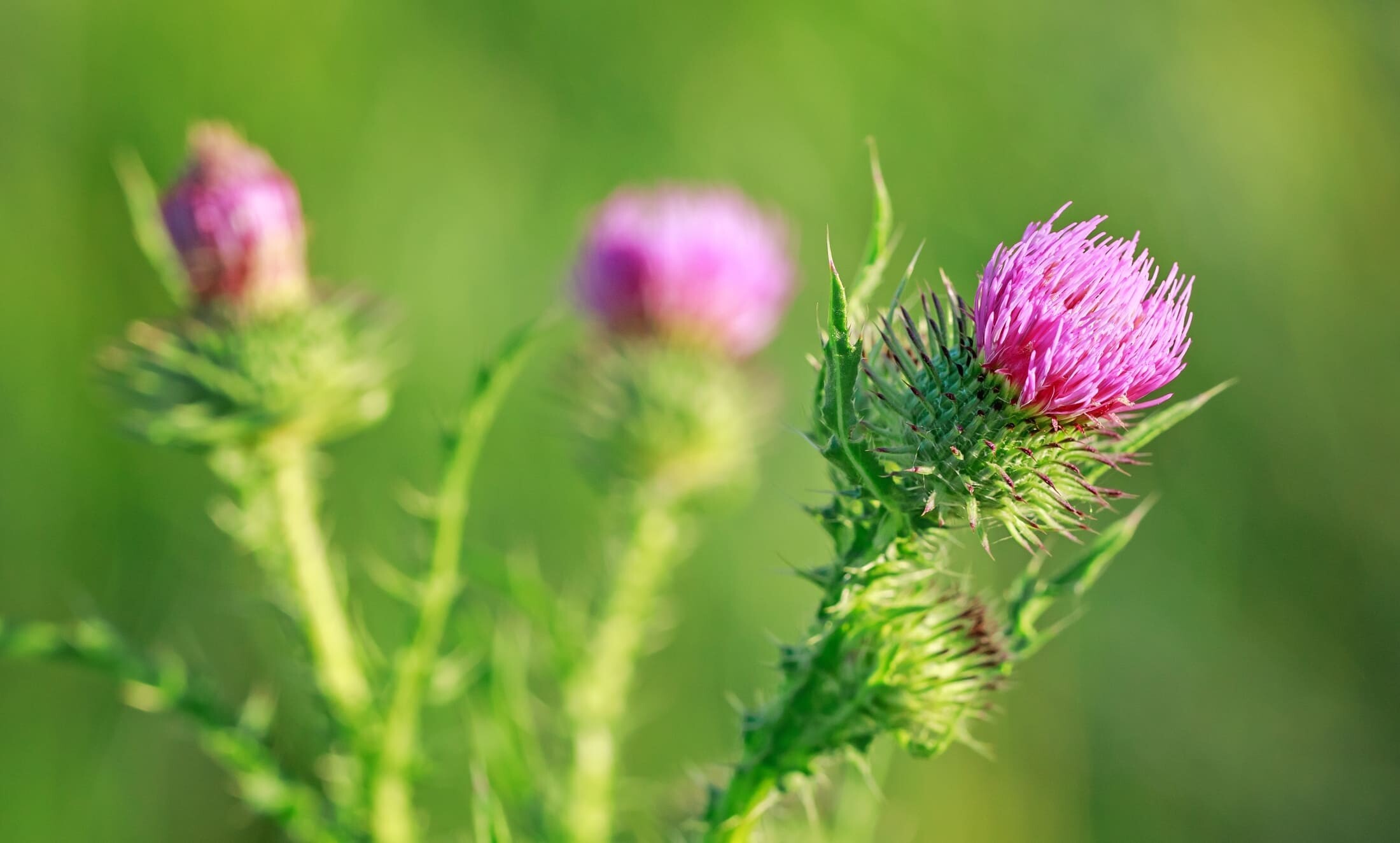 Milk thistle: effect on liver health and detoxificationHow does milk thistle really protect our liver? Find out how silymarin neutralizes free radicals, supports detoxification and what studies say about its effect on fatty liver, hepatitis & co. Find out more now!
Milk thistle: effect on liver health and detoxificationHow does milk thistle really protect our liver? Find out how silymarin neutralizes free radicals, supports detoxification and what studies say about its effect on fatty liver, hepatitis & co. Find out more now! -
 Menopause is not a disease: everything women (and men) should knowHalf of humanity is affected by the menopause. The PRO issue of Health Nerds is all about facts, myths and tips about the menopause.
Menopause is not a disease: everything women (and men) should knowHalf of humanity is affected by the menopause. The PRO issue of Health Nerds is all about facts, myths and tips about the menopause. -
 Stoffwechsel anregen – Ein Guide für mehr Energie, Gesundheit und GewichtsverlustIn diesem Guide erfährst Du, wie Du mit gezielter Ernährung, Bewegung, Schlaf, Stressmanagement und Alltagstricks Deinen Kalorienverbrauch auf natürliche Weise steigerst.
Stoffwechsel anregen – Ein Guide für mehr Energie, Gesundheit und GewichtsverlustIn diesem Guide erfährst Du, wie Du mit gezielter Ernährung, Bewegung, Schlaf, Stressmanagement und Alltagstricks Deinen Kalorienverbrauch auf natürliche Weise steigerst. -
 Hypothyreose und Übergewicht – Aktuelle Erkenntnisse und DatenSchilddrüsenunterfunktion verlangsamt den Stoffwechsel und begünstigt Gewichtszunahme. Erfahre Symptome und Tipps zur Unterstützung Deines Körpers.
Hypothyreose und Übergewicht – Aktuelle Erkenntnisse und DatenSchilddrüsenunterfunktion verlangsamt den Stoffwechsel und begünstigt Gewichtszunahme. Erfahre Symptome und Tipps zur Unterstützung Deines Körpers. -
 Elektrolyte – Die unsichtbaren Regisseure unseres KörpersElektrolyte steuern lebenswichtige Prozesse wie Muskelarbeit, Nervenfunktion und Flüssigkeitshaushalt. Erfahre, warum sie für Gesundheit und Leistung so entscheidend sind.
Elektrolyte – Die unsichtbaren Regisseure unseres KörpersElektrolyte steuern lebenswichtige Prozesse wie Muskelarbeit, Nervenfunktion und Flüssigkeitshaushalt. Erfahre, warum sie für Gesundheit und Leistung so entscheidend sind. -
 Zink reduziert nachweislich die Krankheitsdauer – Was sagt die Wissenschaft?Zink kann mehr als nur das Immunsystem stärken. Studien zeigen, dass es die Dauer von Erkältungen spürbar verkürzen kann.
Zink reduziert nachweislich die Krankheitsdauer – Was sagt die Wissenschaft?Zink kann mehr als nur das Immunsystem stärken. Studien zeigen, dass es die Dauer von Erkältungen spürbar verkürzen kann. -
 Milk thistle: effect on liver health and detoxificationHow does milk thistle really protect our liver? Find out how silymarin neutralizes free radicals, supports detoxification and what studies say about its effect on fatty liver, hepatitis & co. Find out more now!
Milk thistle: effect on liver health and detoxificationHow does milk thistle really protect our liver? Find out how silymarin neutralizes free radicals, supports detoxification and what studies say about its effect on fatty liver, hepatitis & co. Find out more now! -
 Menopause is not a disease: everything women (and men) should knowHalf of humanity is affected by the menopause. The PRO issue of Health Nerds is all about facts, myths and tips about the menopause.
Menopause is not a disease: everything women (and men) should knowHalf of humanity is affected by the menopause. The PRO issue of Health Nerds is all about facts, myths and tips about the menopause. -
 Stoffwechsel anregen – Ein Guide für mehr Energie, Gesundheit und GewichtsverlustIn diesem Guide erfährst Du, wie Du mit gezielter Ernährung, Bewegung, Schlaf, Stressmanagement und Alltagstricks Deinen Kalorienverbrauch auf natürliche Weise steigerst.
Stoffwechsel anregen – Ein Guide für mehr Energie, Gesundheit und GewichtsverlustIn diesem Guide erfährst Du, wie Du mit gezielter Ernährung, Bewegung, Schlaf, Stressmanagement und Alltagstricks Deinen Kalorienverbrauch auf natürliche Weise steigerst. -
 Hypothyreose und Übergewicht – Aktuelle Erkenntnisse und DatenSchilddrüsenunterfunktion verlangsamt den Stoffwechsel und begünstigt Gewichtszunahme. Erfahre Symptome und Tipps zur Unterstützung Deines Körpers.
Hypothyreose und Übergewicht – Aktuelle Erkenntnisse und DatenSchilddrüsenunterfunktion verlangsamt den Stoffwechsel und begünstigt Gewichtszunahme. Erfahre Symptome und Tipps zur Unterstützung Deines Körpers. -
 Elektrolyte – Die unsichtbaren Regisseure unseres KörpersElektrolyte steuern lebenswichtige Prozesse wie Muskelarbeit, Nervenfunktion und Flüssigkeitshaushalt. Erfahre, warum sie für Gesundheit und Leistung so entscheidend sind.
Elektrolyte – Die unsichtbaren Regisseure unseres KörpersElektrolyte steuern lebenswichtige Prozesse wie Muskelarbeit, Nervenfunktion und Flüssigkeitshaushalt. Erfahre, warum sie für Gesundheit und Leistung so entscheidend sind. -
 Zink reduziert nachweislich die Krankheitsdauer – Was sagt die Wissenschaft?Zink kann mehr als nur das Immunsystem stärken. Studien zeigen, dass es die Dauer von Erkältungen spürbar verkürzen kann.
Zink reduziert nachweislich die Krankheitsdauer – Was sagt die Wissenschaft?Zink kann mehr als nur das Immunsystem stärken. Studien zeigen, dass es die Dauer von Erkältungen spürbar verkürzen kann. -
 Milk thistle: effect on liver health and detoxificationHow does milk thistle really protect our liver? Find out how silymarin neutralizes free radicals, supports detoxification and what studies say about its effect on fatty liver, hepatitis & co. Find out more now!
Milk thistle: effect on liver health and detoxificationHow does milk thistle really protect our liver? Find out how silymarin neutralizes free radicals, supports detoxification and what studies say about its effect on fatty liver, hepatitis & co. Find out more now!
Empfohlene Produkte
Holistic support for bones, joints, muscles & skin
For your well-being – inside and outEssential Vitamin for Eyes, Skin, and Immune System
High-Dose Support for Cells & Immune DefenseFor your universal protection
As one of the most valuable proteins in the body, lactoferrin is a natural component of the immune system.For your iron balance
Specially formulated for your iron balance with plant-based curry leaf iron, Lactoferrin CLN®, and natural Vitamin C from rose hips.Holistic support for bones, joints, muscles & skin
For your well-being – inside and outEssential Vitamin for Eyes, Skin, and Immune System
High-Dose Support for Cells & Immune DefenseFor your universal protection
As one of the most valuable proteins in the body, lactoferrin is a natural component of the immune system.For your iron balance
Specially formulated for your iron balance with plant-based curry leaf iron, Lactoferrin CLN®, and natural Vitamin C from rose hips.Holistic support for bones, joints, muscles & skin
For your well-being – inside and outEssential Vitamin for Eyes, Skin, and Immune System
High-Dose Support for Cells & Immune DefenseFor your universal protection
As one of the most valuable proteins in the body, lactoferrin is a natural component of the immune system.For your iron balance
Specially formulated for your iron balance with plant-based curry leaf iron, Lactoferrin CLN®, and natural Vitamin C from rose hips.Holistic support for bones, joints, muscles & skin
For your well-being – inside and outEssential Vitamin for Eyes, Skin, and Immune System
High-Dose Support for Cells & Immune DefenseFor your universal protection
As one of the most valuable proteins in the body, lactoferrin is a natural component of the immune system.For your iron balance
Specially formulated for your iron balance with plant-based curry leaf iron, Lactoferrin CLN®, and natural Vitamin C from rose hips.

